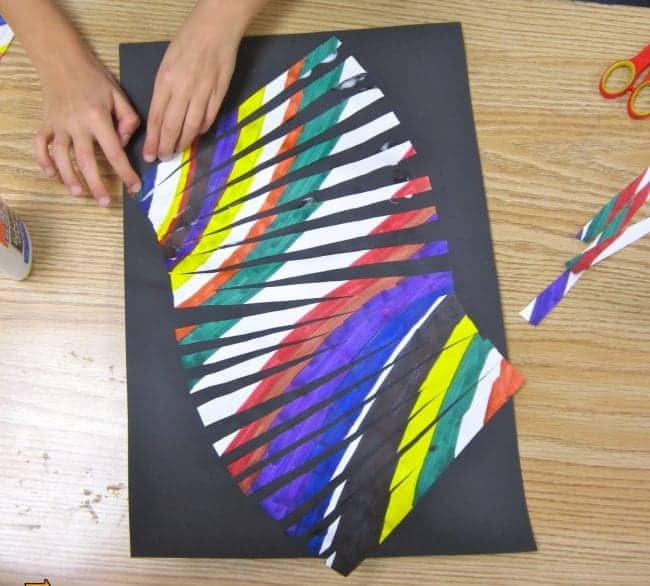Fun and Creative Year 3 Art Activities for Kids
Hey there, super parents! ? Are you ready to dive into a world of colors, shapes, and imagination with your little artist? Year 3 is a magnificent time for children to express themselves, develop fine motor skills, and learn about the vast world of art. In this guide, we’ll explore some wonderful art activities tailored for 7-to-8-year-olds. So, grab your paintbrush, and let’s get our art on!
What Makes Year 3 Art Activities So Special?
At this charming age, children are bursting with energy and ideas, and art provides a perfect outlet for their burgeoning creativity. Year 3 art activities not only help enhance their artistic skills but also contribute to their overall development, including:
- Improved hand-eye coordination
- Enhanced problem-solving abilities
- Better understanding of colors and textures
- Growth in self-expression and communication
Plus, art isn’t just about the end product—it’s about the joy of the process, the learning that comes from making ‘happy little accidents’, and the pride in creating something uniquely theirs. ?
The Perfect Palette: Art Supplies for Year 3 Creatives
Before we jump into the activities, it’s essential to have the right tools at your fingertips. Here’s a quick checklist of art supplies to keep stocked up for your Year 3 artist:
- Assorted construction paper
- Non-toxic paints (watercolor, tempera, acrylic)
- Different sized paint brushes
- Washable markers and crayons
- Colored pencils
- Oil pastels or chalk
- Glue sticks and white glue
- Child-safe scissors
- Craft materials (pom-poms, glitter, beads, etc.)
- A variety of textured fabric and papers
Now that we’re all set, let’s hop into some exuberant art adventures!
Exploring Shapes and Patterns: Simple Geometric Art
Understanding shapes and patterns is fundamental in art, and this first activity is great for reinforcing these concepts. Challenge your Year 3 artist to create a piece using only geometric shapes.
Step 1: Choose a variety of geometric stencils or create your own with cardboard.
Step 2: Select different colored papers or canvases as the base for artwork.
Step 3: Trace and cut out shapes from colored construction paper.
Step 4: Arrange the shapes in interesting patterns on the base before gluing them down.
Step 5: Discuss with your child the patterns they see or the scenes they imagine with their shapes.
Encourage them to think about balance and color as they create their geometric masterpieces.
Colorful Explorations: Mixing and Blending Techniques
Year 3 is a perfect time for children to learn about color theory and experiment with mixing shades. Let’s get those fingers messy with some color blending!
Step 1: Introduce your child to the primary colors—red, yellow, and blue—and talk about how these can be combined to create secondary colors.
Step 2: Set up a station with watercolor or tempera paints and a few mixing trays or palettes.
Step 3: Encourage your young artist to mix their own unique colors and paint a vibrant, abstract piece.
Step 4: Ask them to identify any new colors they create and talk about how combining different amounts of paint changes the shades.
This activity not only teaches children about color but also about the science of mixing and the endless possibilities that come with it.
By fostering an environment that cherishes creativity, you’re giving your child the best tools to express themselves through art. Let’s not stop here, though! Stick around as we continue to unleash the world of creativity with more fantastic year 3 art activities. Up next, we’ll be diving into the wonderful world of textures, nature-inspired crafts, and much more that’s sure to make your child’s imagination soar. Stay tuned for a kaleidoscope of artistic fun!

5 Things Parents Should Know When Preparing for Year 3 Art Activities
Preparing for art activities at home can be just as exciting as the activities themselves. Here are five nuggets of wisdom to help parents and guardians set the stage for a flourishing art environment:
1. Embrace the Mess
Let’s be real, art can get messy, especially with enthusiastic Year 3 creators. Set up a dedicated ‘art zone’ in an area of your home where it’s okay to get a little paint on the table or glitter in the carpet. Cover surfaces with newspaper or a washable cloth, and have aprons or old shirts ready to protect your little one’s clothes.
2. Encourage Process Over Product
Children thrive when they’re given the freedom to explore without worrying about making ‘mistakes.’ Celebrate their creative process by asking open-ended questions about their work. This approach nurtures their imagination and can lead to more meaningful artwork.
3. Simplify Clean-Up
The prospect of cleaning up might sometimes dampen the art-making enthusiasm. Keep it simple by having containers for easy storage of supplies, wet wipes for quick clean-up of hands or spills, and a routine that your child can follow after each art session.
4. Cultivate Art Appreciation
Beyond creating, help your child appreciate art in the wider world. Visit galleries or museums if possible, look at art books together, or even explore different styles of artwork online. This will expand their understanding and appreciation of various art forms and techniques.
5. Replenish and Rotate Supplies
Keep tabs on your art supplies to ensure there’s always something fresh and exciting to work with. Periodically rotating supplies can reignite passion for creating, as different materials open up new possibilities and challenges for young artists.
Remember, these years are foundational for building your child’s relationship with art, so even as you prepare, keep the environment light-hearted and stress-free. It’s about supporting their creative journey and enjoying the beautiful chaos that comes with it!
Textured Tales: Exploring Touch and Feel in Art
Create an adventure filled with touch and visual delight by exploring textures in art. This sensory activity encourages children to use their sense of touch to create and understand the art they make.
Step 1: Gather a variety of textured materials like bubble wrap, sandpaper, fabric scraps, and aluminum foil.
Step 2: Set up a ‘touch station’ where your child can feel each material and talk about the sensations they experience.
Step 3: Provide glue and a large piece of cardboard or heavy paper as a base for their textured collage.
Step 4: After they’ve glued their textures onto the base, invite them to paint over their collage to see how the textures affect brush strokes and paint application.
Step 5: Once dry, encourage your child to again feel the differences, this time with the added layer of paint, and reflect on how it changes the sensory experience.
This activity solidifies the understanding of ‘tactile’ in art and provides a deeper connection to their work through touch. It’s a hands-on way to engage multiple senses while fostering creativity!
Art, dear parents, is a spectacular voyage through a sea of creativity, and you’re the trusted captains guiding your little sailors. Remember to take pictures, laugh at the splatters, and cherish these artistic milestones. Your child is on their way to becoming a confident and joyful creator, and you, my friends, are making it all possible!
Now, are you ready to explore even more art activities? Keep your eyes peeled for our next artsy explorations as we discover the magic of storytelling through illustrations, the joy of recycled art, and the thrill of bringing imaginations to life through sculpture and model making. Here we go, the artful journey continues!
See more great Things to Do with Kids in New Zealand here. For more information see here
Disclaimer
The articles available via our website provide general information only and we strongly urge readers to exercise caution and conduct their own thorough research and fact-checking. The information presented should not be taken as absolute truth, and, to the maximum extent permitted by law, we will not be held liable for any inaccuracies or errors in the content. It is essential for individuals to independently verify and validate the information before making any decisions or taking any actions based on the articles.




